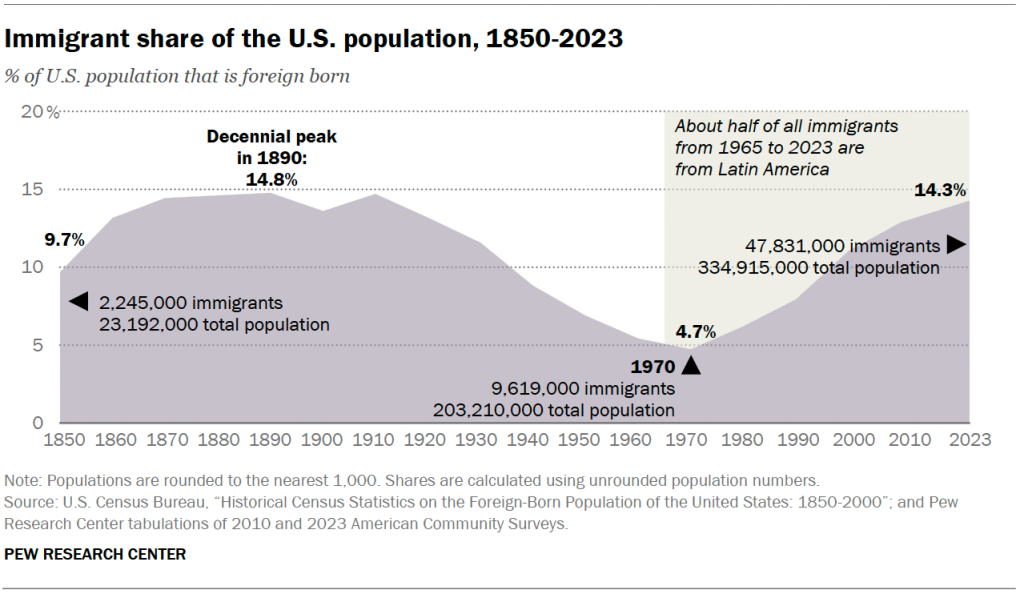The United States saw its immigrant population grow by approximately 1.6 million people in 2023, marking the largest single-year increase since 2000. This significant rise brings the total number of immigrants residing in the country to a record 47.8 million, according to a recent analysis by the Pew Research Center, which drew on newly released data from the U.S. Census Bureau.
This surge in immigration represents a jump from 46.2 million in 2022, continuing a trend of increasing immigration levels. The nation’s immigrant population encompasses a wide range of individuals, including naturalized U.S. citizens, lawful permanent residents (commonly known as green card holders), temporary lawful residents, and those living in the country without authorization. Despite reaching a new numerical high, the percentage of immigrants as part of the U.S. population—14.3% in 2023—remains slightly below historical peaks. By comparison, immigrants accounted for just 4.7% of the population in 1970 but have not yet returned to the record high of 14.8%, set in 1890.

The United States has long been home to more immigrants than any other country in the world, and the diversity of their origins continues to shape the nation’s demographic landscape. As of 2023, immigrants from Mexico remain the largest group, totaling 10.9 million people, or about 23% of the total immigrant population. India follows as the second-largest group, with 2.9 million immigrants (6%), while China (2.4 million, or 5%) and the Philippines (2.1 million, or 4%) round out the top four source countries.

The legal status of the U.S. immigrant population is also varied. Nearly three-quarters of immigrants residing in the country in 2022 were either naturalized U.S. citizens or lawful permanent and temporary residents. In contrast, about 23% of the total immigrant population was living in the country without legal authorization.
This sharp increase in immigration comes amid an evolving conversation about the role of immigrants in the U.S., as well as ongoing debates about immigration policy. The data underscores the significant impact that immigration has on the country’s demographic composition and raises questions about how future policy changes might influence these trends moving forward.


